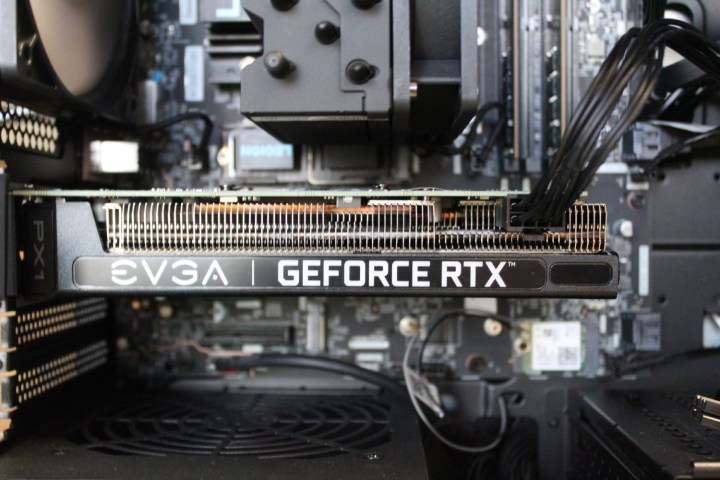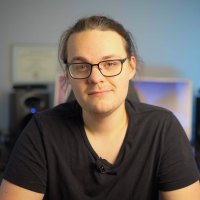The latest generation of graphics cards from AMD and Nvidia has raised the bar for budget gamers. The RTX 3060 Ti, RTX 3060, and RX 6600 XT represent the cream of the crop for 1080p gaming, and the cards are even capable of running some demanding games at 1440p. But which one should you choose?
We tested all three cards to find out which is the best option for your next PC upgrade. They’re all situated between $300 and $400, but there’s a clear winner based on our testing.
Pricing and availability

Nvidia released the RTX 3060 Ti on December 1 for $399. The slightly slower RTX 3060 came later on February 25 for $329. As per usual, the price set by Nvidia is for the Founders Edition models of each card, so options from board partners may be slightly more expensive depending on their cooling ability and features.
AMD announced the RX 6600 XT on July 29 at ChinaJoy and released it shortly after on August 11. Prices start at $379 for baseboard partner cards and go up from there depending on the cooling configuration, clock speed, and other features. AMD isn’t releasing a reference model, but that shouldn’t make a difference for availability.
The good news for availability is also the bad news. The two Nvidia cards are consistently out of stock at retailers, and we expect the RX 6600 XT to sell out immediately when it launches. That’s the bad news. The good news is that you don’t have to make a choice based on availability.
The ongoing GPU shortage has caused a lot of problems for graphics cards, even though it is possible to buy a graphics card in 2021. You’ll struggle to find most models in stock at all, and if you do, they probably won’t be at list price. Expect to pay a few hundred dollars on top of the list price at retailers like Micro Center and Newegg.
On the secondhand market, the situation is even worse. The RTX 3060 Ti pushes toward $900 in many cases, and the RTX 3060 can cost as much as $750. The RX 6600 XT hasn’t launched yet, but we expect it to fall somewhere around $700 on the secondhand market, at least based on current prices.
Performance
| RTX 3060 Ti | RTX 3060 | RX 6600 XT | |
| GPU | GA104 | GA106 | Navi 23 |
| Interface | PCIe 4.0 | PCIe 4.0 | PCIe 4.0 |
| CUDA cores/stream processors | 4,864 | 3,584 | 2,048 |
| Tensor cores | 152 | 112 | N/A |
| Ray tracing accelerators | 38 RT cores | 28 RT cores | 32 ray accelerators |
| Base clock | 1,410MHz | 1,320MHz | N/A |
| Boost clock | 1,665MHz | 1,777MHz | 2,539MHz |
| Memory | 8GB GDDR6 | 12GB GDDR6 | 8GB GDDR6 |
| Bandwidth | 448GBps | 360GBps | Up to 256GBps |
| Memory bus | 256-bit | 192-bit | 128-bit |
| TDP | 200W | 170W | 160W |
A spec comparison of the RTX 3060 Ti, 3060, and RX 6600 XT doesn’t reveal much. The RTX 3060 Ti and 3060 alone don’t really match each other, with the cheaper card featuring more graphics memory but less bandwidth. In addition, AMD and Nvidia use different designs, leading to a much higher clock speed on the AMD card and a bigger memory bus on the Nvidia ones.
Based on our performance testing, the cards stack in the way their prices would suggest. The RTX 3060 is the slowest of the lot, the RTX 3060 Ti is the fastest, and the RX 6600 XT is sandwiched between them. The awkward bit is price. The RX 6600 XT is technically only $20 cheaper than the RTX 3060 Ti, but it often is closer to the RTX 3060 in terms of performance.
Take Red Dead Redemption 2, for example. In our RX 6600 XT review, it only outpaced the RTX 3060 by three frames at 1080p Ultra Quality (68 fps to 65 fps). At the same settings, the RTX 3060 Ti performed much better, delivering a smooth 84 fps average. That was true at 1440p, too, where the RTX 3060 Ti averaged 70 fps while the RX 6600 XT averaged only 55 fps.
We saw similar scaling in Battlefield V, Fortnite, and Civilization VI. 3DMark Time Spy illustrated the performance differences perfectly. The RX 6600 XT scored 9,644, the RTX 3060 scored 8,629, and the RTX 3060 Ti scored 11,706.
The only exception to the performance scaling came in Assassin’s Creed Valhalla, where the RX 6600 XT beat the RTX 3060 Ti at 1080p Ultra High settings (83 fps to 78 fps). However, switching over to 1440p showed the RTX 3060 Ti once again coming out on top.
At its asking price, the RX 6600 XT should compete with the RTX 3060 Ti, but it doesn’t. Cost is important to consider, as nearly $100 separates the cheapest and most expensive card in our roundup. Although the RX 6600 XT is faster than the RTX 3060, it’s not fast enough to justify its price tag.
It’s an awkward step out of the three cards. You will get a performance boost stepping up from the RTX 3060 to the RX 6600 XT, but you’ll get a much more significant boost going from the RTX 3060 to the RTX 3060 Ti. In our testing, the RTX 3060 Ti performs closer to the RX 6700 XT, and that card’s nearly $100 more expensive again.
Ray tracing, upscaling, and more

For features, all three of our competitors are much closer than they were a few months ago. The standout features for the RTX 3060 Ti and RTX 3060 are Deep Learning Super Sampling (DLSS) and
AMD cards used to lack these features, but not any longer. The RX 6600 XT supports
Still, Nvidia takes the cake when it comes to ray-tracing performance. In Cyberpunk 2077, the RTX 3060 Ti’s frame rate decreased by 49% and the RTX 3060’s frame rate decreased by 53% when moving from the Ultra preset to the Ultra RT preset at 1080p. Meanwhile, the RX 6600 XT’s frame rate decreased by a massive 79%.
AMD uses “ray accelerators” in each compute unit, while Nvidia uses dedicated cores for the complex ray-tracing calculations. That leads to much better ray-tracing performance on Nvidia’s cards, so if you want to play the latest games with the latest features, Nvidia is the best option.
Building on that, Nvidia usually bundles
One clear winner

Out of the three cards, there’s one standout performer: The RTX 3060 Ti. It has massively impressive performance considering the price, and it comes with the latest features from Nvidia. The RTX 3060 isn’t a bad option, but the extra price of the RTX 3060 Ti will pay off further down the line with increased upfront performance and better long-term longevity.
It’s a highly capable 1080p card, but it can even push impressive frame rates at 1440p. The RX 6600 XT is the odd man out, performing closer to the RTX 3060 while costing nearly as much as the RTX 3060 Ti. Although it supports




